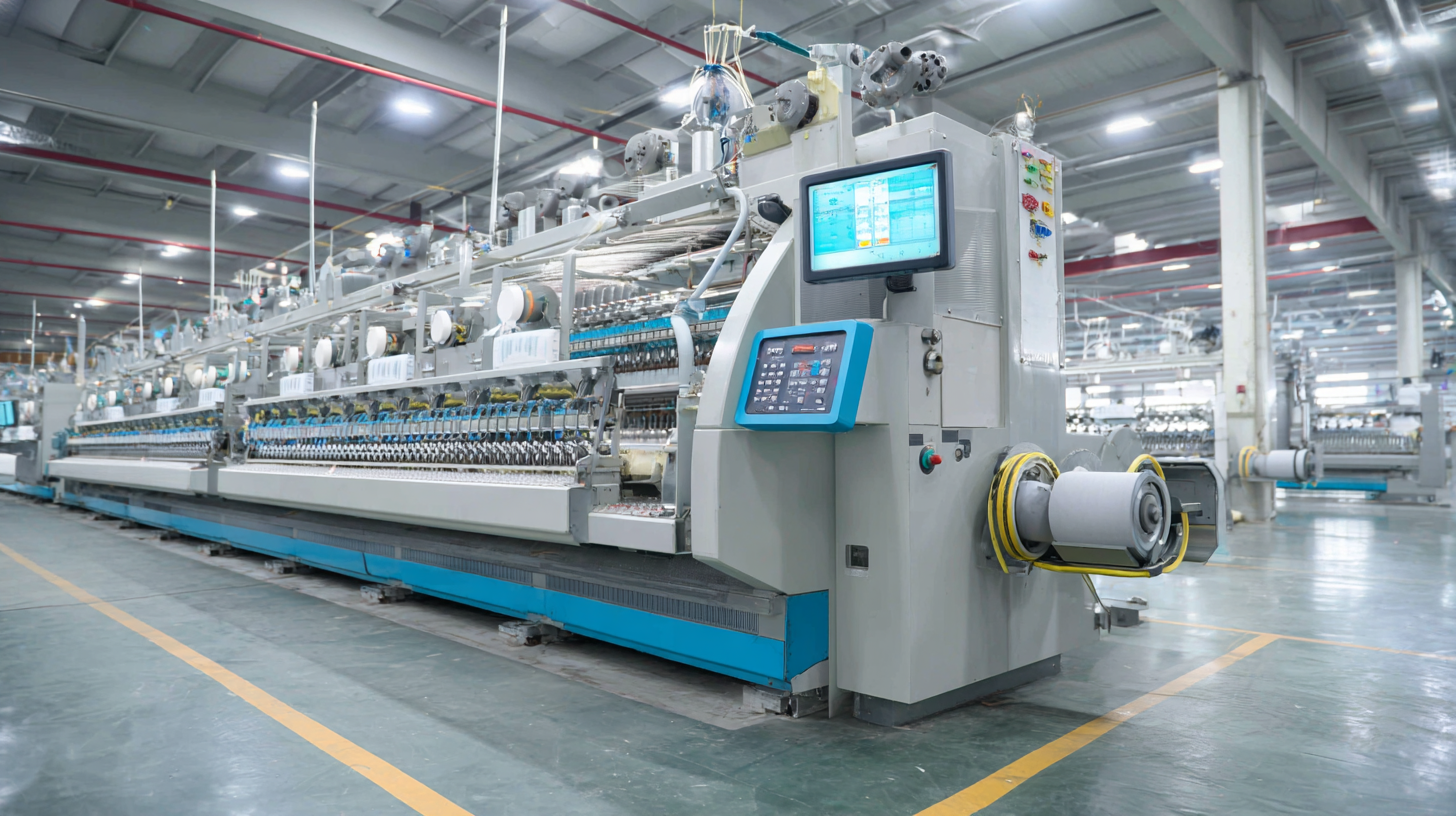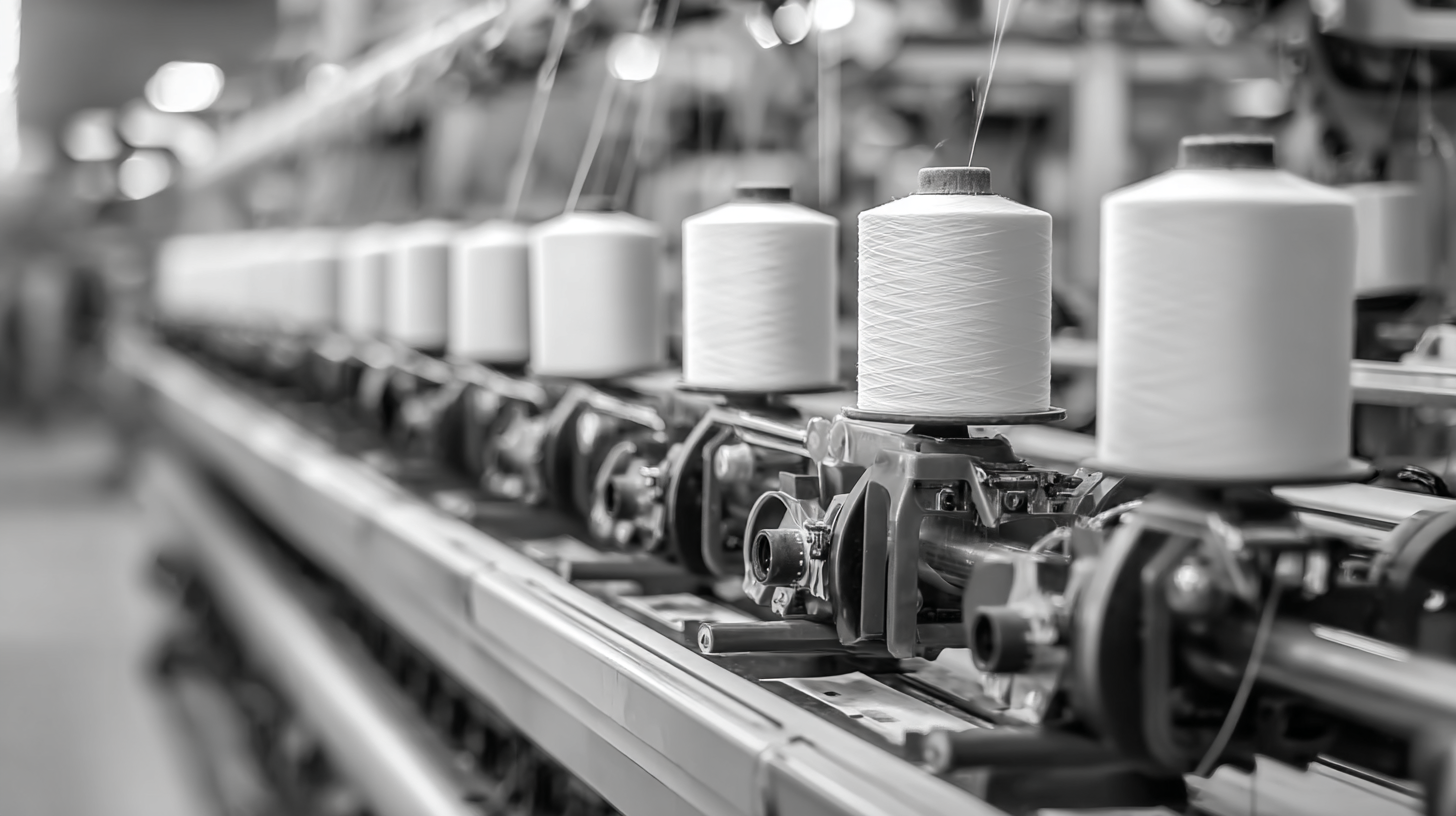Leave Your Message
In 2023, the global automatic textile machine market is anticipated to reach a value of over $6 billion, reflecting a compound annual growth rate of approximately 5.8% from 2022 to 2030, according to a recent industry report by MarketsandMarkets. As textile manufacturers increasingly seek to enhance efficiency and reduce operational costs, investing in automatic textile machines has become essential. These advanced machines not only streamline production processes but also improve the precision and quality of output, making them critical assets in the competitive landscape of the textile industry. This blog will equip you with a comprehensive checklist to identify the top strategies for sourcing the best automatic textile machines, empowering you to make informed decisions that align with industry trends and demands.

When sourcing the best automatic textile machines in 2023, it's crucial to focus on key features relevant to different types of machinery. For spinning machines, consider the efficiency of yarn production and energy consumption. Weaving machines should prioritize ease of operation and versatility in fabric types. Knitting machines require high precision to ensure stitch quality, while finishing machines must deliver consistent results to enhance fabric properties.
In terms of market dynamics, the textile machinery sector is experiencing significant growth, driven by increasing demand across applications like apparel, household textiles, and technical textiles. Understanding market share within each segment can help businesses make informed purchasing decisions. Additionally, the influence of the internet is paramount; online platforms provide a convenient way to compare machine features, prices, and customer reviews.
Tip: When evaluating machines, always check for warranty and after-sales support. This can save considerable costs and downtime in the long run. Another tip is to engage with existing users through forums or social media to gain insights into the real-world performance of specific machines. Always keep an eye on technological trends that could disrupt traditional practices in the textile industry.
The textile industry is currently experiencing a profound transformation, driven by the integration of advanced automation technologies. AI and robotics are reshaping knitting technology, marking a significant step forward in efficiency and production capabilities. Recent reports indicate that incorporating smart knitting machines can improve production rates by up to 40%, while also minimizing material waste. This shift not only enhances operational efficiency but also supports sustainability within the textile manufacturing sector.
When sourcing the best automatic textile machines in 2023, consider prioritizing those equipped with the latest AI capabilities. For instance, smart knitting machines equipped with AI algorithms can adapt in real-time to different fabric requirements, ensuring optimal quality and consistency. Additionally, embracing automation can lead to a notable reduction in labor costs while streamlining production processes.
Tips:
1. Investigate manufacturers that specialize in AI-driven technologies to ensure you’re sourcing cutting-edge solutions.
2. Look for machines that offer easy integration with existing systems to enhance overall production efficiency.
3. Assess the sustainability practices of your potential suppliers to align with industry shifts towards greener manufacturing methods.

In the competitive landscape of textile manufacturing, sourcing high-quality automatic textile machines has become crucial for businesses aiming to enhance productivity and efficiency. According to a report by MarketsandMarkets, the global textile machinery market is projected to reach USD 24.2 billion by 2025, growing at a CAGR of 5.9%. This growth is driven by technological advancements and increasing demand for automated solutions that streamline operations and reduce labor costs.
When considering the best brands for automatic textile machines in 2023, several manufacturers stand out for their commitment to quality and innovation. Brands like Juki, Brother, and Durkopp Adler have consistently been recognized for their high-performance machines that cater to various segments of the textile industry. For instance, Juki's automatic sewing machines are widely regarded for their precision and durability, making them a preferred choice among garment manufacturers. Additionally, the rising trend of smart factories highlights the need for machines integrated with IoT capabilities, which brands like Brother are effectively addressing with their advanced textile solutions.
Investing in reliable equipment from leading brands not only ensures optimal performance but also contributes to long-term cost savings. A Deloitte report indicates that companies that adopt automation in their production processes experience a 30% increase in output while reducing production costs by up to 20%. As the industry evolves, staying ahead with the best brands will be key to maintaining a competitive edge in textile manufacturing.

When investing in automatic textile machines, proper maintenance is fundamental to ensuring their longevity and optimal performance. Regular maintenance not only minimizes downtime but also maximizes productivity, making it essential to incorporate a routine care regimen into your operations. Start by creating a maintenance schedule that includes daily, weekly, and monthly tasks. Daily checks should focus on cleaning lint filters, inspecting machine parts for wear, and ensuring lubrication levels are adequate to prevent friction that can lead to costly repairs.
Additionally, monthly maintenance should involve more thorough inspections and possible replacements of critical components, such as belts and bearings. Make sure to refer to the manufacturer's guidelines for specific maintenance recommendations. Keeping a log of all maintenance activities aids in tracking the condition of your machines and helps predict when future servicing might be needed. Furthermore, investing time in training your staff on proper machine operation and care empowers them to identify issues early, which can significantly extend the life of your automatic textile equipment.
| Feature | Description | Importance | Maintenance Tips |
|---|---|---|---|
| Speed | The rate at which the machine operates. | High | Regularly check settings and calibrations. |
| Energy Efficiency | The amount of energy consumed during operation. | Medium | Perform regular energy audits. |
| Precision | Accuracy in fabric production. | High | Conduct regular calibration checks. |
| Durability | Expected lifespan of the machine. | High | Use parts recommended by the manufacturer. |
| Ease of Use | Simplicity in operating the machine. | Medium | Provide regular training for operators. |
When sourcing automatic textile equipment in 2023, cost considerations play a crucial role in enabling Taiwan's industry upgrade amidst talent shortages. As Taiwan strives to maintain its competitive edge in industrial automation and the move towards unmanned factories, understanding the financial implications of investing in advanced textile machines is essential. Potential buyers must evaluate not only the initial purchase price, but also long-term operational costs, maintenance requirements, and potential savings from improved efficiency.
Moreover, the need for a skilled workforce intensifies the pressure on businesses to invest wisely. With established companies recognizing the importance of hiring local talent, it becomes imperative for them to analyze costs associated with training and retaining skilled personnel. By creating a strategic balance between investment in technology and workforce development, manufacturers can better navigate the challenges presented by the evolving landscape of the textile industry. This comprehensive approach ensures sustainable growth while addressing the pressing issues of industrial transformation in Taiwan.
